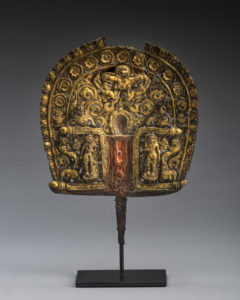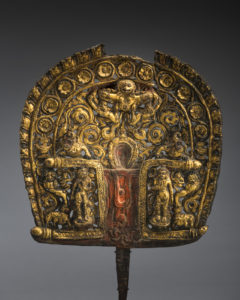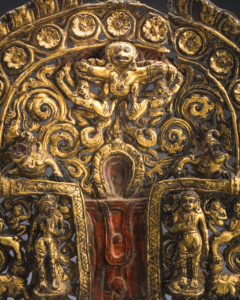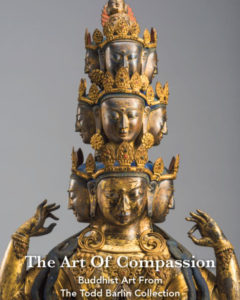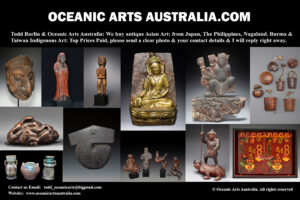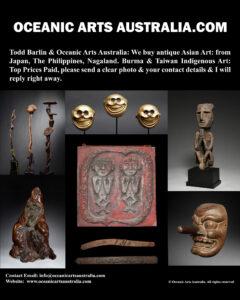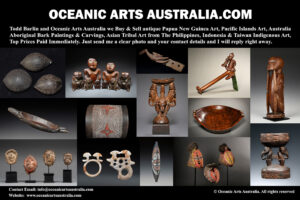A Superb Tibetan Buddhist Gilt Bronze Repousse Aureole Tibet 14th- 15th Century
| Collection No. | TA-120 |
|---|---|
| Size | Height 25cm x 19cm without the stand |
A Superb Tibetan Buddhist Gilt Bronze Repousse Aureole Tibet 14th- 15th Century
This aureole, which is missing its focal image, still retains much of its magnificence. The image might have been a standing Padmapani, flanked by his two bodhisattva attendants. The top depicts Garuda (mythological bird), the enemy of serpents and a general protector and bringer of auspiciousness. In mythology, Garuda took hold of the subterranean serpents, who were churning the milk oceans, and stole the ambrosia that resulted from their activities. In later Buddhist myth, the ambrosia was replaced by the ‘Perfection of Wisdom’ texts, which Garuda rescued and passed on to the Buddhist deities. He is seen holding a snake in his claws and is attended by two Apsara nymphs below him. Also, below, in the corners of the horizontal bars, are two Makaras (water spirits), who are also auspicious. On each side of them horizontally are two vases containing long-life nectar. Below them may be seen two attendants to the main figure (missing), as well as two standing half-human, half-lion leogryphs, and two elephants. The main shrine area is painted in red cinnabar.
Repoussé is a metalworking technique in which a malleable metal is shaped by hammering from the reverse side to create a design in low relief. Chasing or embossing is a similar technique in which the piece is hammered on the front side, sinking the metal. The two techniques are often used in conjunction.
Many metals can be used for chasing and repoussé work, including gold, silver, copper, and alloys such as steel, bronze, and pewter.
These techniques are very ancient and have been extensively used all over the world, as they require only the simplest tools and materials, and yet allow a great diversity of expression. They are also relatively economical since there is no loss or waste of metal, which mostly retains its original size and thickness.
Provenance: The Todd Barlin Collection of Buddhist Art
Published and Exhibited: The Art of Compassion: Buddhist Art from the Todd Barlin Collection. 2018 by David Templeman Published page 16
INQUIRE HERE
To see many more rare items and the finest masterpieces, please make an appointment with us to visit the gallery.
For all inquiries, please contact us.

